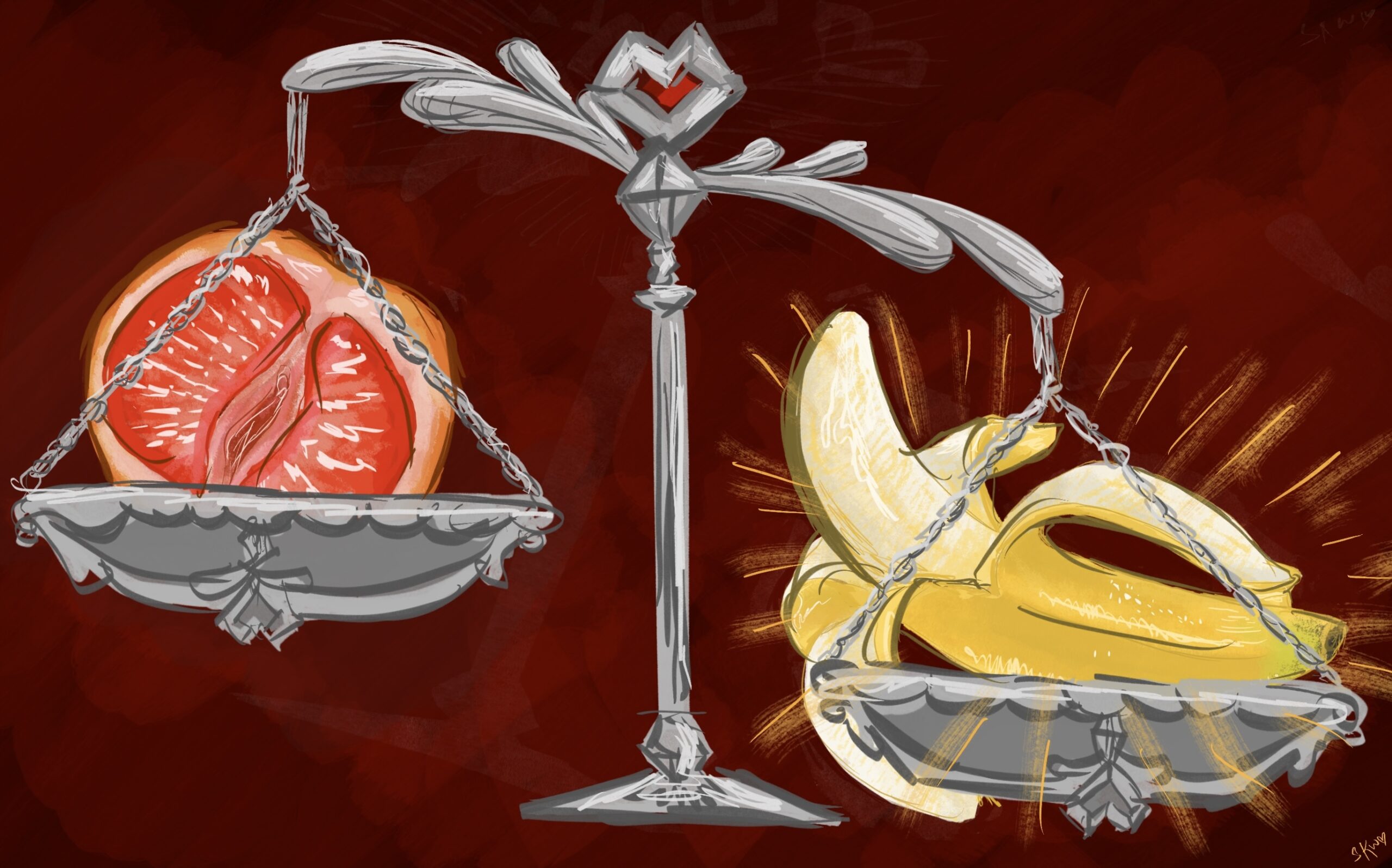From shame to satisfaction
Overcoming the orgasm gap in straight relationships.
A recent study revealed a striking discrepancy in sexual satisfaction: 82 per cent of men report climaxing during sex, compared to just 32 per cent of women. Additionally, 20 per cent of men, but only 5 per cent of women, “always” orgasm during sexual encounters. This “orgasm gap” is not attributed to biology, but rooted in the gender dynamics between men and women, including societal norms, communication barriers, and unrealistic expectations surrounding female sexuality.
This “gap” is not just a reflection of inequality that appears in the bedroom, but also a manifestation of how history, culture and gender roles mold women’s sexual experiences. To bridge this gap, we need to confront how expectations suppress women’s desires, emphasize the importance of open communication between partners, and destroy the shame connected to female pleasure.
As I grow older, I notice that women are conditioned to be “people pleasers” from a young age. Whether through history, culture, or movies, women are made to prioritize the needs of others, whether as daughters, mothers, girlfriends, or even friends. History shows that the expectations placed on women are completely different than those of men. Women are expected to be motherly: nurturing, caring, and self-sacrificial. This conditioning extends to the bedroom, as it creates an inequality between men’s pleasure and women’s satisfaction. Women’s pleasure is put aside while the men’s is valued.
However, when a woman is conditioned to be compliant, it is difficult to express dissatisfaction or correct their partner during intimacy. This dynamic creates a harsh boundary between partners that make open communication difficult between partners. Whether it is due to fear of rejection, humiliation, or a feeling that their pleasure does not matter, these issues are internalized if a man does not climax during sex; but is the same self-scrutiny internalized by men too? This also creates a cycle of shame, as many believe it is their fault for not being satisfied. The shame is worsened by comparison, as I’ve heard so many women wonder, “if everyone else can do it, why can’t I?”
An interesting aspect of the comparison leads to the porn’s industry impact on both male and female sexuality. In porn, women are shown reaching climax easily (sometimes even multiple times in a row) even in unnatural settings or scenarios. Although these performances are scripted and not reflective of real intimacy, I noticed that, the majority of the time, women who compare themselves to an ideal also regularly consume porn. It is difficult to distance ourselves and distinguish between fantasy and reality when the two seem to be synonyms of one another. The problem with porn is that these scenes highlight sex as a performance, rather than an intimate experience between partners. While this pressure also affects men in certain ways, it still benefits men by reducing a woman’s pleasure to an act for the male gaze. This makes it easy to dismiss sex as a means to an end, and not for mutual enjoyment.
Another factor adding onto the orgasm gap is the societal and cultural pressure on men to measure their worth by how many women they have slept with. This focus on sexual conquests distracts from creating an experience centered around mutual pleasure. While not all men hold this view, many of the women I know have complained that they would find themselves uncomfortable after the act and felt as if they were objects rather than individuals seeking mutual satisfaction.
Moreover, I’ve had numerous discussions with my male friends around the restricting sexual expectations men face to “perform” or know what they are doing at all times, which leads to performance anxiety and decreased libido (and could lead to erectile dysfunction). Society has created an environment where men are encouraged to focus on numbers (or “body count”) and heightened pleasure, which further reduces a woman to her body—rather than ensuring her comfort and satisfaction—and subconsciously signals to men that they are entitled to certain experiences and bodies. This societal expectation, alongside the expectation of women to keep quiet about their desires, leads to very unsuccessful couplings. This silence increases female inadequacy, making it difficult for women to advocate for themselves or seek help.
Interestingly, women in same-sex relationships tend to have more fulfilling sexual experiences. This can be credited to the communication and understanding between partners. Both partners are more attuned to each other’s needs and are willing to have open discussions on what feels good and what does not. This empathy creates a more balanced sexual dynamic rather than conforming to gendered expectations. The absence of gender norms allows women to communicate more openly about their desires without the fear of rejection or being called out as “too demanding.”
Some may argue that the orgasm gap is a result of physical differences between men and women. After all, men experience orgasm through penetrative sex, while women’s bodies are more complex than that. Although that is true to some extent, societal and cultural differences are shown to be the result of the gap, not biological differences. Cultural norms, unrealistic expectations, and lack of communication is the triple threat.
While others may argue that the gap only affects certain types of heterosexual relationships, I believe that to be untrue. After all, so many straight women are in different types of relationships and yet they share a common trait which is feeling inadequate in their bodies’ lack of reaction. This issue requires a cultural movement, where a woman’s pleasure is taken as seriously as a man, and where open communication is encouraged.

